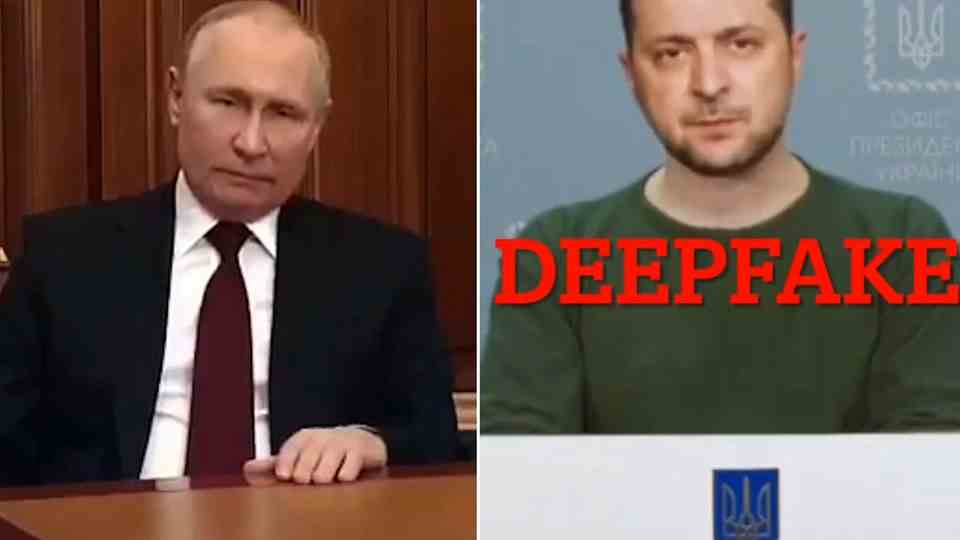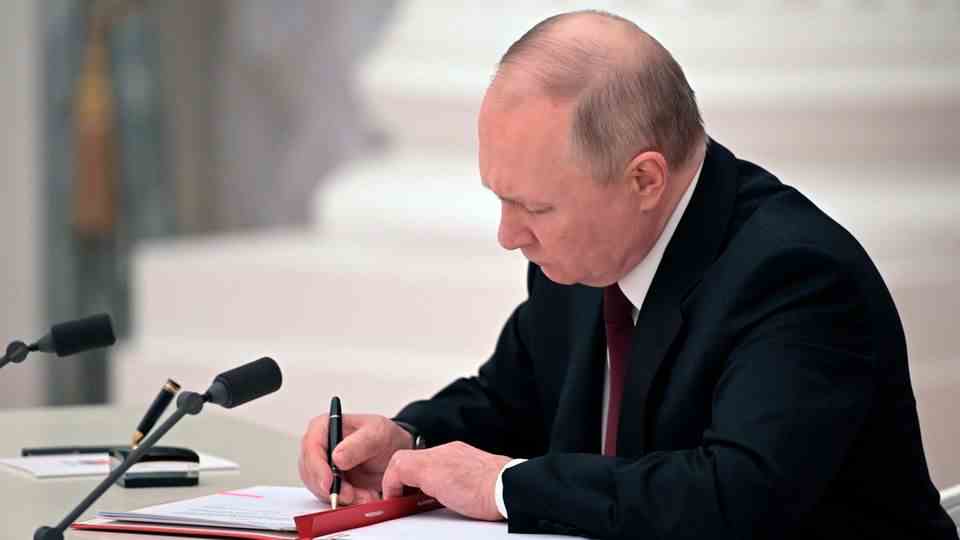Russia is vastly superior to Ukraine militarily. Nevertheless, the Russian army has major problems in its war against its neighbors. This is also reflected in their camouflage.
Russia extensively reformed and modernized its army after the 2008 Georgian War. At times, the Kremlin poured $160 billion a year into its military. Investments have been made in everything from modernizing Russia’s nuclear and aerospace forces to its ground forces and navy, said Michael Kofman, director of the US Center for Naval Analyzes and an expert on the Russian military. the US magazine “The New Yorker”. Every year on May 9, the “Day of Victory” over Nazi Germany in World War II, Moscow presents its high-tech war equipment to the world public in parades and weapon shows.
However, little of this can be seen in the war against Ukraine. Instead, Russia is using armored personnel carriers, tanks and other tracked vehicles that were developed decades ago, some of which are simply left lying around in the field. Images showed that Russian Air Force aircraft were partially navigating with civilian GPS devices, reported the political scientist at the University of the Federal Armed Forces in Munich, Frank Sauer. In crashed wrecks, notes were even found on which coordinates had been written by hand. Putin’s soldiers even lack trucks for material transport and encrypted radios.
And even one of the simplest and most basic of war materials seems to be lacking in Moscow’s mighty army: camouflage.
“Breathtaking level of dilettantism”
Russian troops in Ukraine tried to hide tanks and other armored vehicles using tree branches, straw and even carpets to avoid detection and attack, reports the “Washington Post”. Observers speak of a “breathtaking degree of dilettantism” with reference to corresponding videos and images from the war zone.
A video allegedly taken during a battle by a Russian soldier taking cover amid a collection of armored vehicles shows branches of a coniferous tree made makeshift on the flank of one of the vehicles. It “smacks of desperation,” quoted the Washington Post as saying by Mike Jason, a retired US Army tank officer who served in Iraq and Afghanistan.
Other footage, according to the newspaper, shows armored trucks covered in what appears to be farm hay. Another video shared on social media showed Russian troops covering a vehicle with carpets or some other type of heavy fabric.
This could be an attempt to reduce or distort the vehicle’s heat emissions, which Jason suspects are used by anti-tank weapons such as the Javelin missiles supplied by the US to Ukraine to lock on to their targets. An altered thermal signature could make it difficult for a gunner to distinguish a Russian armored vehicle from a civilian car, although a trained scout would switch back and forth between a thermal imager and binoculars to spot other signs of enemy activity.
Russia inadequately prepared for Ukraine war
Camouflage for forces or equipment is a basic part of warfare. It works by distorting shapes and reducing heat signatures, and can give a vehicle’s crew vital seconds to respond to an attack or to attack, for example. In the age of drones, satellite images and infrared vision devices, however, it is only of limited use and is mainly used to fool the human eye.
According to Jason, the US military’s tactic is to cover entire vehicles with light camouflage netting when they are not moving, even if only for a short time. Ukrainian units have been observed using combinations of netting and foliage to distort the shape of armored vehicle hulls. Pine boughs, like those used by Russian troops in Ukraine, are “better than nothing,” Jason says, but they suggest the unit in question lacks basic expertise in using camouflage or simply doesn’t have the right equipment .

According to experts, their apparent lack of modern camouflage nets is further evidence of how ill-prepared Russian commanders were for war, the Washington Post continues. This confirms the belief of the United States and Europe that President Vladimir Putin and his senior military commanders did not anticipate the heavy resistance their troops are facing.
According to the newspaper, Rob Lee, military expert and senior member of the US think tank Foreign Policy Research Institute, takes a similar view: Lee interprets Russia’s problems with camouflage as an indication that the commanders may have inadequately prepared and instructed their troops – or that they may have been were convinced from the beginning of an easy war and a quick fall of the government in Kyiv.
Commercial and smaller tactical drones provided by Turkey to the Ukrainian armed forces have enabled them to spot Russian troops to attack them from the air or with artillery, the military expert explained the situation. This may have prompted some Russian units to resort to makeshift solutions, such as camouflaging their vehicles with shrubs, or simply taking them off the road and hiding them in the trees. “Russia,” Lee added, “doesn’t have a good answer.”
Swell: “Washington Post”, “New Yorker”, Deutschlandfunk, “for safety’s sake”


